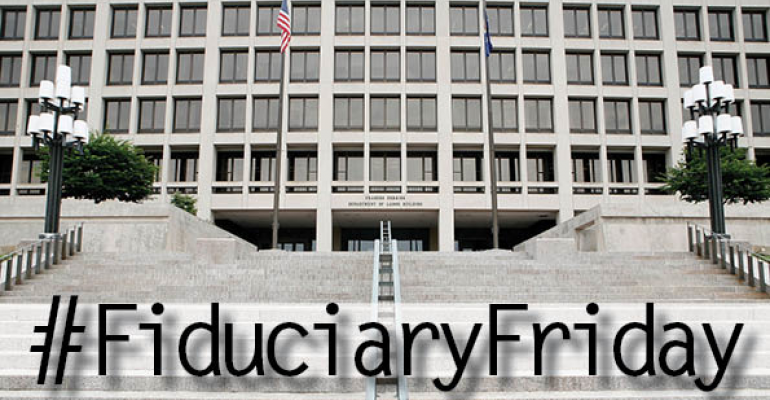It’s 2025. Nearly a decade has passed after the 75th Anniversary of the Investment Advisers Act and the U.S. Department of Labor’s enactment of its “conflict of interest” rule.
Looking around, I realized I had awoken in my hotel room in Washington, D.C. As I arose to prepare for yet another visit to policy makers to lobby for what we now called a “bona fide fiduciary standard,” I reflected on the actual events of the past decade.
The DOL’s rule was implemented in 2016, but over time the “best interests contract exemption” (BICE) was interpreted in such a fashion as to render its fiduciary protections meaningless. In large part this was because the Financial Industry Regulatory Authority’s arbitration system controlled the dispute resolution process. In 2018, FINRA had gained oversight of RIAs, after lobbying Congress for many years.
Under pressure from many dual registrant firms, client waivers of core fiduciary duties were now common under BICE. Disclosure was deemed to be the only requirement to mitigate a conflict of interest. Disclosure requirements also were simplified and buried in the fine print of Form ADV, that read: “Our interests may not be aligned with yours” and “We may receive additional compensation as a result of our recommendations to you.”
FINRA, the gargantuan gorilla now overseeing nearly all of financial services, brought pressure on the CFP Board to re-set the standards of conduct for CFP holders to a very low level. All of the many various industry associations remained, and even a few more had emerged. But any influence these fragmented organizations may have once had, even through the forming of coalitions, was diminished by the outsized influence FINRA possessed at the other government agencies and in Congress.
The large Wall Street firms and insurance companies continued to dominate financial services. Wall Street’s broker-dealer firms retained enough marketshare to possess a salesforce that was able to hype IPOs; this continued Wall Street’s ability to justify its highly profitable investment banking fees.
The movement to lower-cost investment providers, such as “robo-advisors,” stalled. The low fee structures resulted in low levels of profitability, even for those few that managed to acquire scale. The initial providers of capital desired to exit from their private equity investments, leading to the sale of many of the robo-advisors to Wall Street firms and insurance companies, which quickly subsumed them.
American consumers, continuing to read of ongoing scandals emerging as a result of the sales culture that so dominated Wall Street’s large firms, shied away from seeking out any financial advice. Even fee-only RIAs continued to remain relatively small, as a percentage of the advisory industry, given the much higher compensation offered from business models built around product sales and the huge marketing budgets of Wall Street firms – driven by the sales of expensive products.
Worse yet, another financial crisis had emerged. Without the scrutiny of an army of expert purchasers’ representatives, Wall Street manufactured and sold to unsuspecting consumers a new form of asset-backed securities, which turned out to be junk. Fortunes were lost, and counter-party risk rose to high levels, prompting another freeze in the credit markets. The Federal Reserve struggled this time to provide the liquidity needed. The world economy sat on the edge of a precipice.
And over the past decade nearly all of the Baby Boomers had retired, with most ill prepared to meet their financial needs during retirement. Despite the greater needs of its growing elderly population, the federal government sought to cut its budget under threat of another debt downgrade by the credit rating agencies, and due to “Greece-like” pressure from the United States’ major creditors (including China). Existing benefit programs were being cut, including Medicare and Social Security, placing further financial strains on retirees.
Thinking on the current situation, I strolled out from my hotel and flagged a taxi, en route to once again battle with Wall Street on Capitol Hill and in the halls of government agencies. Of course, neither I nor the other advocates who continue to desire a true profession of financial and investment advisors, or who represented consumer interests, possess much of a chance of getting this latest “bona fide fiduciary standard” imposed.
On the 85th anniversary of the enactment of the Investment Advisers Act, the emergence of a true profession of investment advisers—who eschewed conflicts of interest and embraced the delivery of expert investment and financial advice—remained largely a dream of the drafters of the Advisers Act. It would likely remain a dream of theirs, and of mine, for many decades to come.
Ron Rhoades currently serves as a assistant professor of finance and Chair of the Financial Planning Program at Western Kentucky University. A tax and estate planning attorney and fee-only investment adviser, Rhoades regularly provides commentary on recent industry developments and fiduciary standards.





